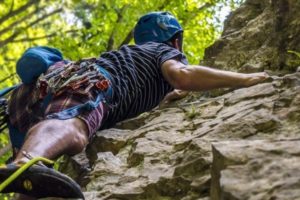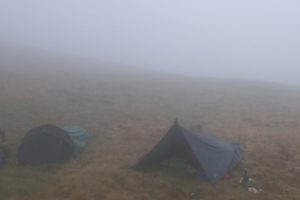Hiking is one of the most popular recreational activities in the world. It can be catered to individuals of all abilities and range from a short stroll through the countryside to a long-distance, multiple-day trip across the country. The biggest problem with hiking is knowing how to get started. If you search for hiking on the internet, there is a lot of content around hiking locations and gear to buy that, in all honesty, it can all become a bit daunting.
While you can easily take a short hiking trip wearing your trainers, carrying packed lunch in your rucksack, make sure that you’re safe in the event of an accident is another story. Below are my ten tips for beginner hikers to help you get started safely in the countryside.
Purchase Good Boots
Your ability to walk comfortably will directly impact how much fun you have on your first few hikes. If you end up with sore feet and blisters, it will put you off hiking. Head into a reputable outdoor shop to try on a variety of different brands and styles. For the beginner hiker, stick to a classic style of boot made of sturdy, waterproof material with high ankle support. If you are going to splash out on any piece of gear, make it your boots, your feet will thank you later.
Buy a Small Day-pack
You are going to want a small backpack to carry food, water, and an extra warm layer. The key here is to keep it small. That way you can’t overfill your bag with things you don’t really need. When packing, make sure you keep your bag lightweight so it doesn’t become a burden to carry. The ideal size is around 30 litres. You can see my favourite 30-litre bag here, and remember to pack your emergency gear inside your day pack.
Invest in a Waterproof Jacket and Trousers
Hiking in the British Isles will eventually see you stuck outside in a downpour. It’s an unfortunate fact of life but one that shouldn’t put you off. There are a lot of great options for waterproofs over a wide range of designs and price ranges.
While you don’t need to buy a brand name or a top of the range version, I would make sure you purchase gor-tex and opt for a jacket that has vents. This will allow perspiration to escape preventing you from getting damp. Trousers are a must and should go over the top of your boots to prevent water from entering into the top of your shoes. Avoid Pac a Macs as they tend to trap moisture inside, which will leave you very hot and sweaty.
Phone Apps
There are several great apps available that can help you find suitable hiking trails, plan your own routes, and navigate. While you should never solely rely on your phone while out hiking, it seems silly not to make the most of some great technology.
ViewRanger is a GPS style app that allows you to locate yourself even without phone signal. However, you need to have downloaded the map for offline use while you have internet. You can also download waypoints that will show you exactly where the path goes. AllTrails is a similar app showing you popular hiking routes in your area.
Learn to Read a Map
Map reading skills are one area that most people don’t bother with. Let’s be honest, you have a mobile phone with google maps, a specialist application attached to your mobile phone, or have you gone out and bought a hiking specific GPS. Why do you need to read a map?
The problem with all electronic equipment is that it requires battery power and a satellite connection. If you don’t have both, you’re in trouble. If your batteries run out because you’ve had an accident and spent more time on the hillside than you expected or the fog has come in, and your GPS won’t connect to a satellite, you will need to fall back on these map-reading skills.
Learning to map read will be one of the most challenging skills you have to master to become a competent hiker. Learn to identify footpaths and bridleways, different terrain features, vegetation types, and land use access. It’s easiest to do this in an area you already know relatively well. As your map reading skills improve, it is then a good idea to develop your compass skills.
Pack the Right Food for Lunch
While it can be tempting to fill your pockets with sweets, this isn’t what your body is going to need. Try to bring a mix of sweet and savoury snacks.
Some of the best hiking snacks are dried fruits, nuts, snack bars, beef jerky, and flapjacks. For lunch on a day hike, it is hard to go wrong with a trusty sandwich, if you want to mix it up, try a wrap or cold pasta salad. Avoid foods that will need cooking or reheating otherwise, you’re going to have to take cooking equipment that is both heavy, expensive and, most importantly, will not fit into a 30-litre backpack.
Start With Short, Easy Walks
If you are planning your first hike, choose a reasonable objective. It probably isn’t wise to try and summit a Scottish mountain on your first hike.
In an ideal world, find a nice woodland trail over easy terrain. Likewise, don’t plan on hiking for eight hours. Aim for a comfortable length of time, like three hours. As you gain fitness and become more adept at navigating, you can plan longer, more challenging hikes.
Inform Others
If you’re going hiking in the countryside, take an emergency pack. This way, if something does happen, and you run into trouble, at the very least, you have the basics. Check out what I take in my emergency pack here.
It is also always a good idea to let someone know where you plan to park, a rough route plan, and how long it will take you. That way, if anything were to happen, they could alert the proper authorities to get help. Don’t assume you will always have a signal, hills and valleys can easily block phone signals leaving you in a dead spot.
Check the Weather
Checking the forecast the night before you are planning to go hiking should become habitual. While a bit of wind and rain never hurt anyone, it can turn a pleasant walk into a depressing slog rather quickly.
A bit of common sense will tell you if the weather is suitable for hiking. If there is a 100% chance of thunder and lightning, it’s probably best to wait for another day, if the forecast is just overcast, then go ahead but pack your waterproofs just in case.
Join a Club
The UK and Ireland have numerous walking groups and societies scattered throughout them. Going out with more experience hikers is a great way to learn the ropes and pick up useful advice.
Furthermore, you don’t have to worry about navigation or route planning so it’s easier to for you to enjoy the hiking. A quick google search will likely show you what’s available in your area, but some of the most common are Ramblers, Walking for Health and Time Outdoors.
Final Thoughts
Getting started hiking as a beginner can seem overwhelming, but start slowly and ease your way into it as with any new sport. It is one of the most rewarding hobbies you can have. Your newfound passion for hiking could see you travel around the world exploring exciting new trails. We hope that this post helps you get started on your hiking adventures, see you on the trail.







